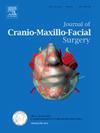Iliac crest free flap versus fibula free flap for mandibular reconstruction: Cost-effectiveness analysis in a Chinese population
IF 2.1
2区 医学
Q2 DENTISTRY, ORAL SURGERY & MEDICINE
引用次数: 0
Abstract
Mandibular reconstruction is vital in oral and maxillofacial surgery to restore aesthetics and function after tumor resection or trauma. The iliac crest-free flap (ICFF) and fibula-free flap (FFF) are widely used, but their cost-effectiveness and impact on quality of life (QoL) are debated. A retrospective study of 142 patients (2012–2018) compared ICFF and FFF, analyzing direct costs (surgical, medication, hospitalization) and indirect costs (surgery duration, hospital stay). QoL was assessed using the UW-QOL questionnaire, and incremental cost-effectiveness ratios (ICER) were calculated. ICFF patients had shorter surgery times (370.47 ± 10.02 vs. 481.59 ± 115.77 min, P < 0.01) and lower hospitalization costs ($11,992.77 ± 2130.24vs.$14,294.74 ± 2976.95, P < 0.001). ICFF showed better QoL in appearance and emotional domains, while FFF performed slightly better in salivary function and swallowing. ICER analysis confirmed ICFF as more cost-effective, with superior QoL outcomes. ICFF is ideal for younger patients with moderate defects, offering shorter stays and improved mood-related QoL, whereas FFF is preferred for large defects. Tailored decisions based on defect type, age, and expected outcomes can optimize satisfaction and resource use.
髂骨游离皮瓣与腓骨游离皮瓣用于下颌骨重建:中国人群的成本-效果分析。
在口腔颌面外科手术中,下颌重建对于肿瘤切除或创伤后恢复美观和功能至关重要。髂嵴无瓣(ICFF)和腓骨无瓣(FFF)被广泛应用,但其成本效益和对生活质量(QoL)的影响存在争议。一项回顾性研究比较了142例患者(2012-2018)的ICFF和FFF,分析了直接成本(手术、药物、住院)和间接成本(手术时间、住院时间)。使用UW-QOL问卷评估生活质量,并计算增量成本-效果比(ICER)。ICFF患者手术时间较短(370.47±10.02 min vs 481.59±115.77 min)
本文章由计算机程序翻译,如有差异,请以英文原文为准。
求助全文
约1分钟内获得全文
求助全文
来源期刊
CiteScore
5.20
自引率
22.60%
发文量
117
审稿时长
70 days
期刊介绍:
The Journal of Cranio-Maxillofacial Surgery publishes articles covering all aspects of surgery of the head, face and jaw. Specific topics covered recently have included:
• Distraction osteogenesis
• Synthetic bone substitutes
• Fibroblast growth factors
• Fetal wound healing
• Skull base surgery
• Computer-assisted surgery
• Vascularized bone grafts

 求助内容:
求助内容: 应助结果提醒方式:
应助结果提醒方式:


